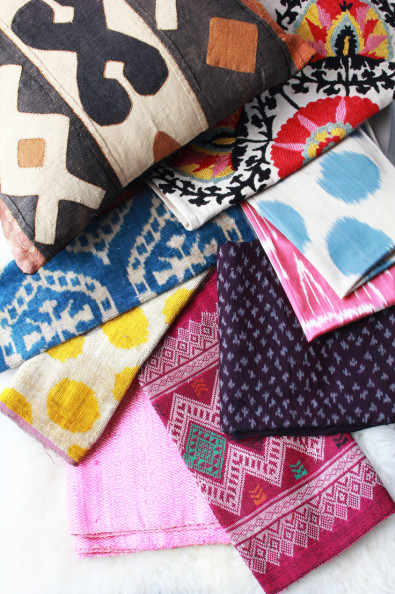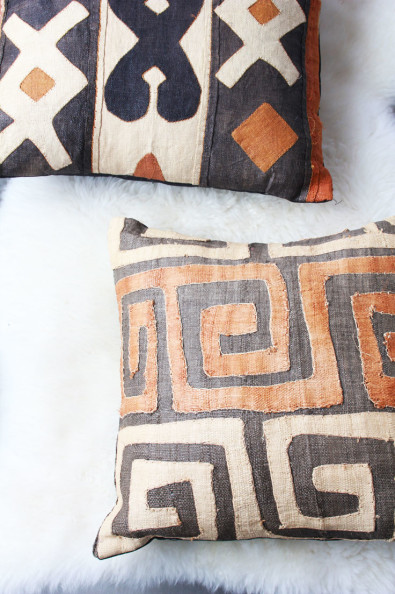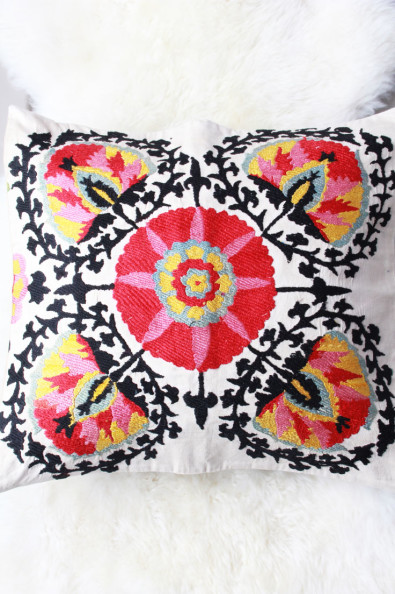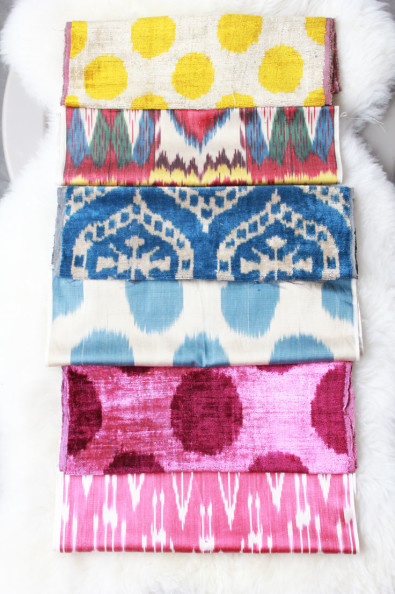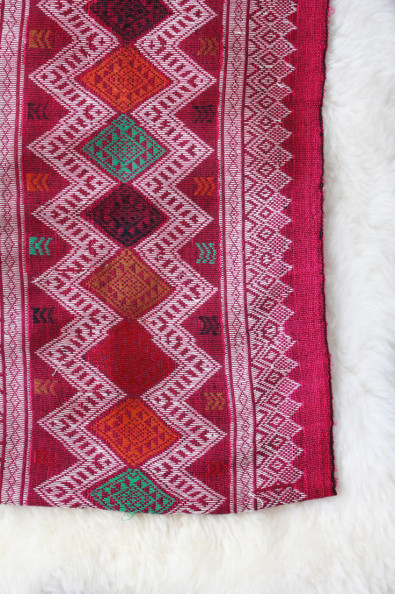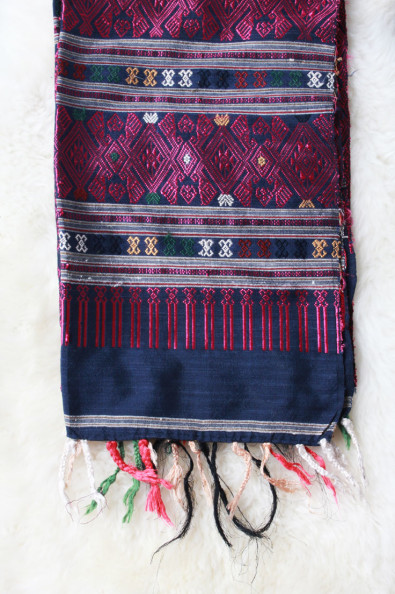After an unplanned absence from the blog last week, I’m back today to share one of my favorite travel/home décor tips—global textiles. It seems global textiles have been holding their popularity in interior design for quite a while now. I first started sourcing textiles on our travels back in 2009, when I picked up three handmade Kuba cloth pillow covers at a market in Cape Town, South Africa. Since then, I’ve scoured markets in Bangkok and Istanbul and amassed quite a collection of interesting and vibrant textiles. It’s one of my favorite ways to bring that well-traveled, collected feel into our home. This year, I’m finally getting most of my fabric made into pillows, and I can’t wait to share the results as I place each piece in its intended room. In the meantime, I thought I’d share a quick textile glossary—it took me a lot of research over time to understand each of these. So below is just a fun little guide to the different patterns, plus my tips for selecting your own textiles when traveling.
Global Textile Glossary
Kuba
Kuba cloth is a traditional hand-woven textile made from raffia palm leaves by the Kuba people in the Republic of Congo. They dye the raffia fibers using mud or other natural materials, then rub the fabrics by hand to soften them so they’re easier to weave. The resulting pattern is typically a basic, geometric design in muted earth tones. While often turned into pillows, locally Kuba cloth is created into skirts for ceremonial celebrations.
Find Kuba cloth pillows at Wisteria and Pfeifer Studio.
Suzani
Suzani is a type of embroidered, decorative textile made in Uzbekistan, Tajikistan, Kazakhstan, and other Central Asian countries. They are often made of cotton or silk, then embroidered in silk or cotton thread. “Suzani” means needlework, and they were traditionally made by brides as part of their dowry, then presented to the groom on the wedding day. The design is usually a medallion form, often made up of flowers, leaves, sun or moon shapes. You’ll find them in several forms – bed covers, wall hangings, and pillows most often.
Find a great collection of suzani pillow covers from YASTK on Etsy.
Ikat
Ikat has been a popular textile in Western interior design for centuries. Usually made with silk or silk velvet fabric, the threads are dyed before they are woven into textiles. Basically, the loose threads are tie-dyed to color the thread—meaning the dye is carefully placed on different portions of the loose threads so it can form the proper pattern when it is woven on a loom. The patterns are bold and pronounced; the colors often very bright.
Find a great collection of silk and velvet ikat pillow covers from YASTK on Etsy.
Thai Silk
Traditional Thai silk is hand-woven, meaning each fabric is unique. The patterns are very intricate and the material has a unique sheen.
Kilim (not shown)
Kilim is a type of weaving that produces a flat surface with no pile. Kilims are usually made from cotton or wool fibers as carpets or pillows. Turkey is known for its kilims, as are other countries throughout the Middle East and Eastern Europe. You can spot them for their intricate, geometric-shaped patterns and rich colors—dark reds, browns, oranges, greens.
Find a great collection of kilim pillows from YASTK on Etsy.
Tips for Selecting Textiles
- Research before you go. Look for street markets and textile vendors before you arrive to your destination. You’ll have the best luck identifying famous markets in larger cities, but you never know where you may find a local market worth exploring.
- Shop with a plan. Know where you might use the fabric once you get home, so you have an idea of the quantity you’ll need–you’ll need to tell the shopkeeper how much fabric you want in yards. A good rule of thumb we’ve used is a yard for a larger pillow; a half yard for just the front or back side of a smaller pillow.
- Be discerning. Take your time sorting through the stacks of fabrics and making your selections. Once you ask the shopkeeper to cut the fabric, it’s yours.
- Be open to imperfections. Look for high quality and consistency in the pattern. But also be open to imperfections—most of these fabrics are one of a kind and not mass produced for perfection!
- Factor in production costs. This includes the cost of a seamstress (unless you sew!) and the pillow filling. Realize that in some cases, depending on the fabric you select and seller, you may just strike even–or you may luck out and save significantly versus what you could buy online.


